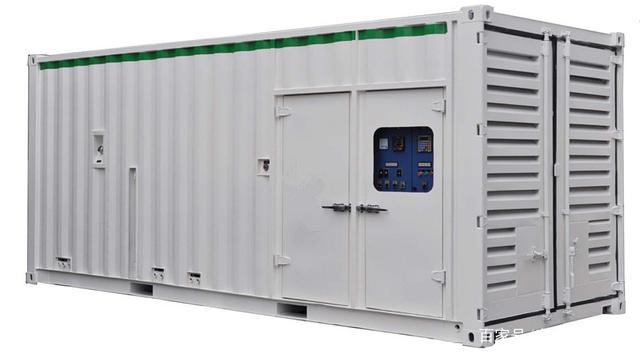
E-House (prefabricated substation) is a modular and highly integrated power solution widely used in power infrastructure, industrial applications, oil & gas, data centers, and renewable energy (solar and wind power). With the advancement of smart grid modernization, renewable energy expansion, and the growing demand for rapid power deployment, the market for E-House is expanding significantly in Nepal, the Middle East, and Southeast Asia.
1. Development Trends of E-House
(1) Higher Integration and Intelligence
-
Utilizes SCADA (Supervisory Control and Data Acquisition) for remote monitoring and smart operations.
-
Integrates digital protection relays and automation control systems to enhance safety and operational efficiency.
-
Compatible with renewable microgrid and energy storage systems, meeting the needs of clean energy projects.
(2) Structural Optimization and Modular Design
-
Standardized and modular design enables quick assembly and flexible configuration, reducing construction costs.
-
Compact layout optimizes space utilization, ideal for projects with limited land availability.
-
Equipped with integrated cooling and ventilation systems, making it suitable for extreme environments such as high temperatures, humidity, and sandstorms.
(3) Adaptability to Extreme Environments
-
Designed with IP54/IP65 high protection levels, ensuring reliable operation in harsh environments (deserts, high humidity, sandstorms).
-
Features fireproof, explosion-proof, and corrosion-resistant technologies, making it suitable for oil & gas, mining, and offshore platforms.
-
Seismic-resistant design, meeting the requirements of earthquake-prone regions like Nepal and Southeast Asia.
(4) Support for Higher Voltage Levels
-
Traditional containerized substations are mainly designed for 35kV and below, whereas modern E-House solutions now support 110kV and even 220kV.
-
Integration with GIS (Gas-Insulated Switchgear) improves safety and operational reliability.
-

E-House Prefabricated Substations
2. Applications of E-House in National Grid, Renewable Energy, and Overseas Markets
(1) National Grid and Power Transmission Infrastructure
The State Grid Corporation of China (SGCC) and other major grid operators are actively promoting smart grid development, ultra-high-voltage transmission, and urban-rural power distribution upgrades, making E-House ideal for:
✅ Substation expansion and renovation – E-House enables compact substation deployment, minimizing civil engineering work and reducing construction time.
✅ Smart grid applications – Supports remote monitoring, load management, and automation, improving grid efficiency.
✅ Emergency power supply – Provides rapid deployment for disaster recovery, temporary site power, and construction projects.
(2) Solar, Wind, and Other Renewable Energy Projects
With the global surge in renewable energy investments, E-House is increasingly used in:
✅ Solar/wind power step-up substations – Serves as a key component in connecting photovoltaic and wind farms to the grid.
✅ Renewable microgrid systems – Works with energy storage to ensure stable power supply for off-grid or remote areas.
✅ Wind farm power distribution – Ideal for offshore wind farms and mountain-based wind power projects.
(3) Overseas Market Opportunities (Nepal, Middle East, Southeast Asia)
Nepal Market
Nepal’s power infrastructure is focused on hydropower development, grid expansion, and industrial parks, with strong demand for E-House in:
✅ Hydropower plants – Serves as a step-up station and substation for power generation.
✅ Power transmission and distribution upgrades – Enables rapid deployment to improve electrification in remote regions.
✅ Industrial power supply – Supports manufacturing plants, telecom base stations, and other commercial applications.
Middle East Market (Saudi Arabia, UAE, Qatar, etc.)
The Middle East requires high-protection, heat-resistant, explosion-proof E-House solutions, with key applications in:
✅ Oil & Gas sector – Used in refineries, natural gas stations, and offshore drilling platforms.
✅ Renewable energy (solar & wind power) – With increasing energy transition efforts, E-House is critical for solar/wind power substations and energy storage facilities.
✅ Infrastructure development – Saudi Arabia’s Vision 2030 is driving large-scale projects in data centers, airports, highways, and industrial zones, creating a high demand for E-House.
Southeast Asia Market (Vietnam, Thailand, Indonesia, Philippines, etc.)
With rapid industrialization and rising power demand, E-House is highly applicable in:
✅ Industrial & manufacturing sectors – Supports steel plants, cement factories, and industrial parks requiring high-voltage power distribution.
✅ Hydropower and renewable energy – Deployed in hydropower stations, solar farms, and wind energy projects across Laos, Indonesia, and the Philippines.
✅ Ports and rail transportation – Southeast Asia is investing in ports, railway systems, and EV charging infrastructure, where E-House provides a fast and scalable power solution.

3. Market Opportunities for CHNGS in the E-House Sector
🔹 Providing customized E-House solutions to meet diverse market demands (explosion-proof, sand-resistant, moisture-resistant designs).
🔹 Establishing partnerships with EPC contractors, power utilities, and industrial clients to secure large-scale projects.
🔹 Promoting smart substation solutions with SCADA, GIS, and high-voltage switchgear for enhanced functionality.
🔹 Focusing on renewable energy and infrastructure projects, particularly solar, wind, hydropower, and industrial parks.
Next Steps for CHNGS:
1️⃣ Identify key target markets (national grid, renewable energy, overseas EPC projects).
2️⃣ Develop and market smart E-House solutions (integrating SCADA, GIS, and high-protection designs).
3️⃣ Build partnerships with local players (power utilities, engineering firms, government agencies).
Does CHNGS already have specific E-House products for the national grid and renewable energy markets, or would you like to develop a more detailed market entry strategy?
